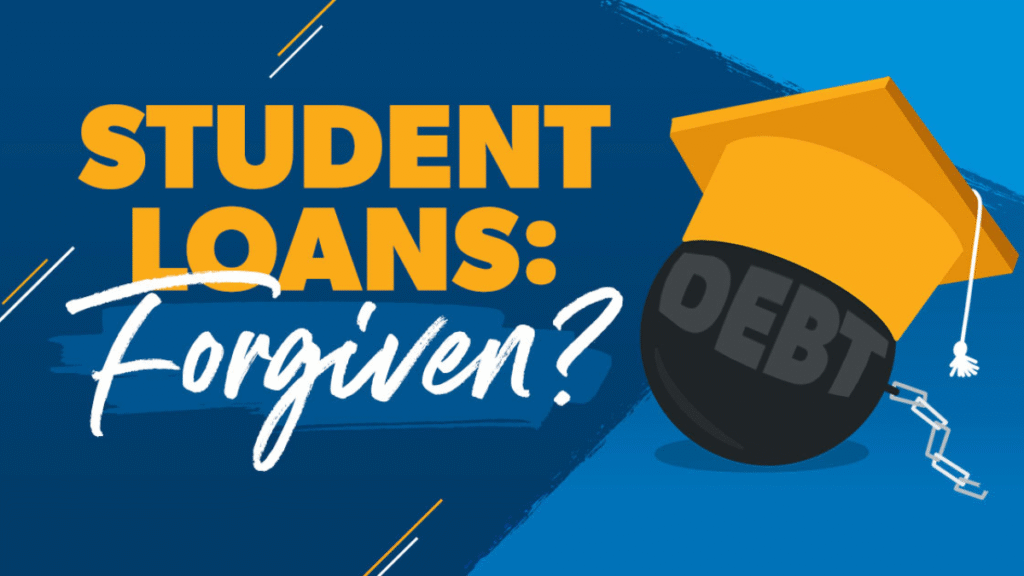A Shifting Landscape for Student Loan Forgiveness
The student loan forgiveness update for May 2025 paints a challenging picture for millions of borrowers. As of May 16, 2025, the Trump administration has resumed collections on defaulted federal student loans, GOP lawmakers are pushing to overhaul repayment plans, and legal battles continue to block key forgiveness programs like SAVE. With 42.7 million borrowers owing over $1.6 trillion, and nearly 10 million at risk of default, the stakes are high. Here’s the latest on student loan forgiveness and what it means for you.

On May 5, 2025, the U.S. Department of Education restarted collections on defaulted loans, ending a pause that began in March 2020. This move, announced by Secretary of Education Linda McMahon, affects around 1.8 million borrowers, with notices sent to 200,000 defaulted borrowers about potential wage garnishment and tax refund seizures. Posts on X reflect borrower anxiety, with users noting the sudden shift after years of leniency under the Biden administration.
Legal Battles and Program Suspensions
A critical student loan forgiveness update centers on the SAVE plan, once hailed as the most affordable income-driven repayment (IDR) option. Blocked by a federal appeals court since last summer, SAVE remains frozen as of May 16, 2025, impacting 8 million enrolled borrowers. The court’s ruling also paused forgiveness under other IDR plans like PAYE and ICR, leaving borrowers unable to progress toward debt cancellation after 20 or 25 years. The Trump administration has signaled it may not appeal the ruling, potentially letting SAVE die.
Public Service Loan Forgiveness (PSLF), which offers debt cancellation after 10 years for public sector workers, remains intact but faces restrictions. In March 2025, President Trump signed an executive order to exclude organizations with “substantial illegal purposes”—like those allegedly supporting illegal immigration or terrorism—from PSLF eligibility. While this change isn’t retroactive, it could limit future qualifying employers, though specifics remain vague.
GOP Proposals Threaten Forgiveness Options
The latest student loan forgiveness update includes GOP-led efforts to reshape the student loan system. On May 8, 2025, House Republicans proposed the Student Success and Taxpayer Savings Plan, which would repeal SAVE, PAYE, and ICR, replacing them with a single IDR plan offering forgiveness after 30 years—delaying relief for many. The plan also caps undergraduate borrowing at $50,000 and graduate borrowing at $100,000 starting July 2026, potentially pushing students toward riskier private loans.
Advocates like Persis Yu from the Student Borrower Protection Center have called this a “retaliation” against borrowers, particularly impacting teachers, nurses, and veterans relying on PSLF. Current borrowers might be grandfathered into older plans like IBR, but new borrowers after July 2026 would face limited options, with higher payments likely. On X, users like @AttorneyCrump have criticized the plan, warning it could trap borrowers in debt for decades.
Processing Backlogs and Borrower Limbo
Another student loan forgiveness update involves the 1.9 million borrowers stuck in IDR processing limbo. Since the SAVE plan’s legal challenges began, the Department of Education has repeatedly suspended IDR application processing, with the latest pause starting in February 2025. However, a court filing on April 25, 2025, part of a lawsuit by the American Federation of Teachers, outlined a plan to resume processing by May 10, 2025. The first status report, released on May 15, detailed which past forbearances qualify for PSLF buyback credit, offering some hope for public service workers.
For now, borrowers in forbearance due to the SAVE ruling aren’t accruing interest, but this period doesn’t count toward forgiveness. Those pursuing PSLF can explore the PSLF Buyback program to retroactively credit nonpayment periods, though processing delays persist. The backlog has real consequences—each unprocessed month delays relief, costing borrowers time and money.
What Borrowers Can Do Now
Despite the uncertainty, some forgiveness options remain. PSLF is still a viable path for public sector workers, though borrowers should confirm their employer’s eligibility amidst new restrictions. Teacher Loan Forgiveness offers up to $17,500 for educators in low-income schools after five years, and Borrower Defense provides relief for those defrauded by their schools, like the 4,100 DeVry University students approved for forgiveness in January 2025.
For those in default, the Department of Education recommends loan rehabilitation or consolidation to avoid wage garnishment, with details at StudentAid.gov/end-default. Borrowers on IDR plans should prepare for potential payment increases, especially if forced to switch from SAVE to plans like IBR, which often have higher monthly costs. Recertifying income in 2025 could also lead to payment spikes, as many haven’t updated their income since 2020.
Looking Ahead: A Tough Road for Borrowers
The student loan forgiveness update for May 2025 highlights a shrinking safety net for borrowers. With mass forgiveness off the table and IDR options under threat, financial strain is mounting. The Trump administration’s focus on repayment over relief, combined with GOP legislative efforts, suggests a future where borrowers face higher payments and longer debt timelines. Staying informed and exploring remaining programs like PSLF or state-level relief options will be crucial.
See also https://scoopusa24.com/tornado-warning-michigan-storms-lansing-2025/
